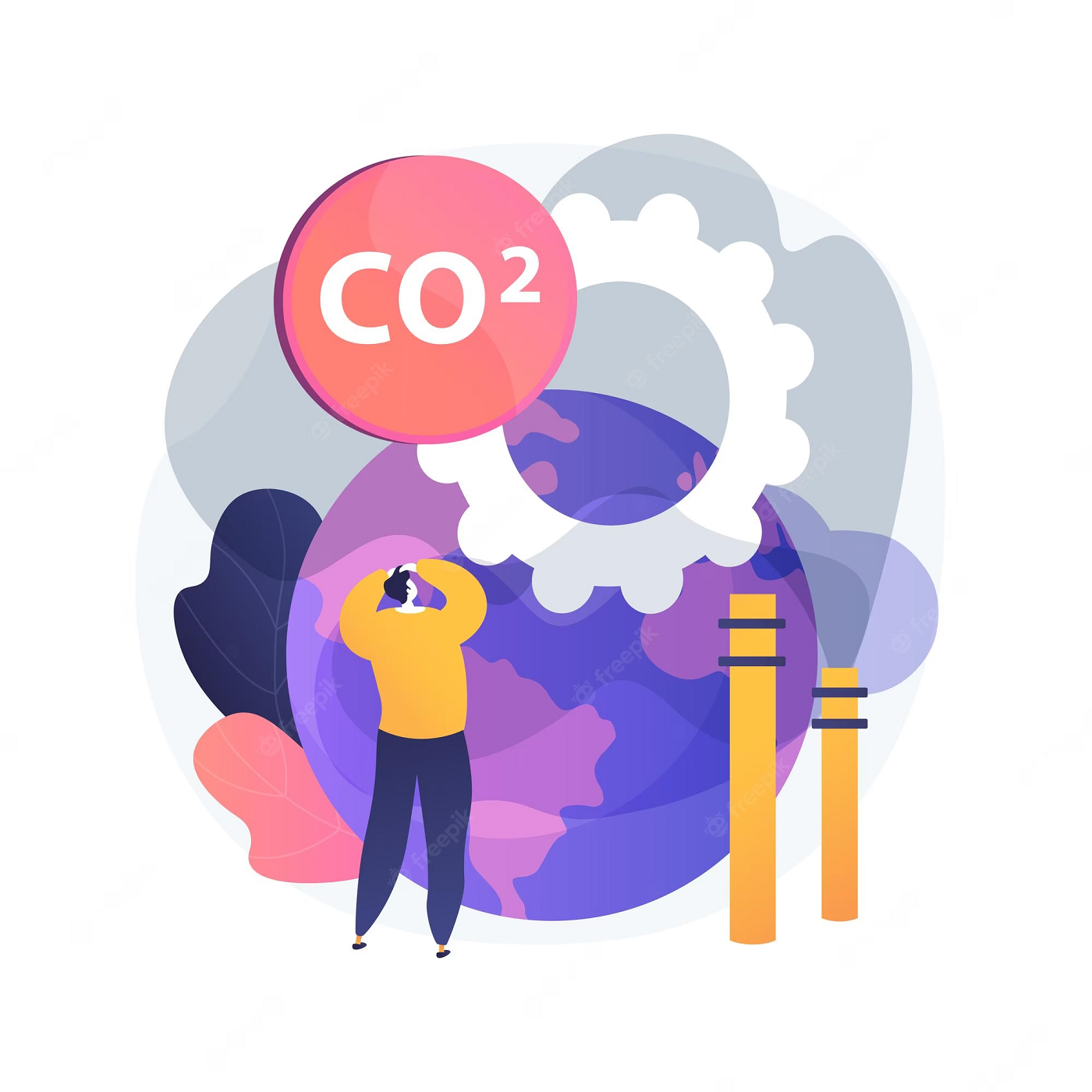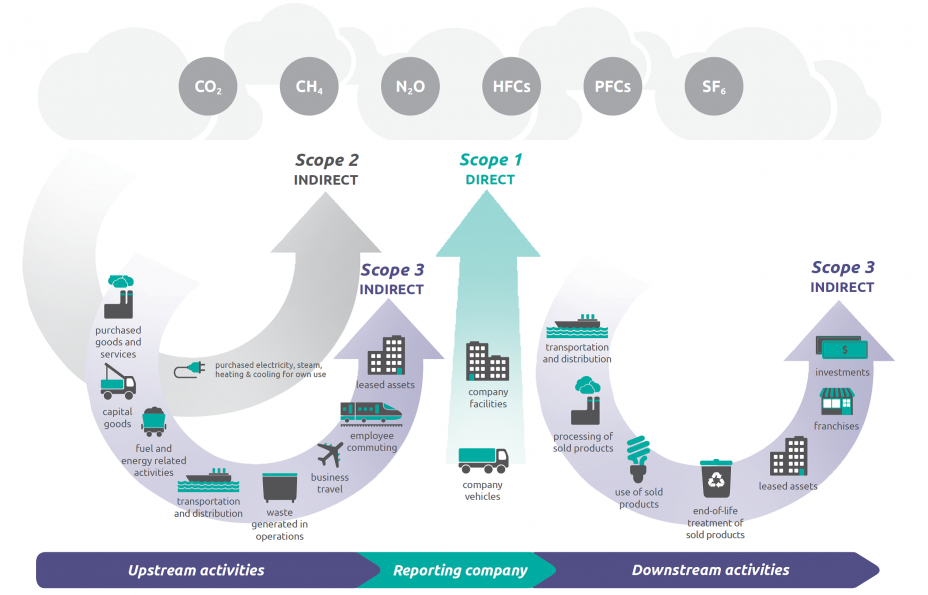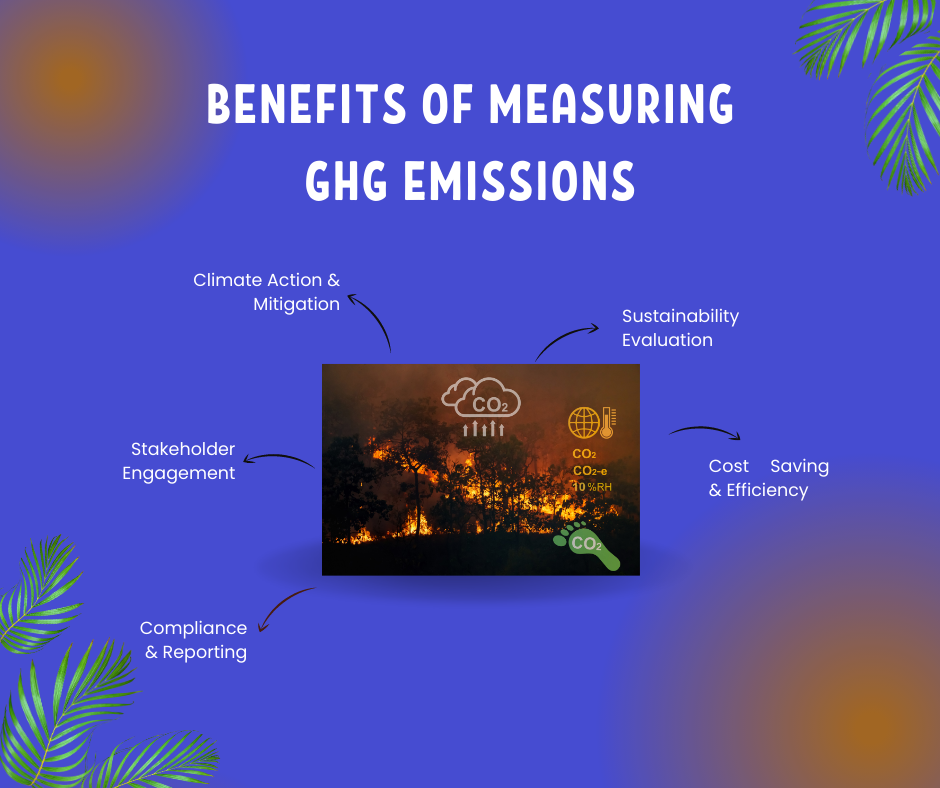Contact: +91 99725 24322 |
Menu
Menu
Quick summary: Dive into the world of measuring greenhouse gas (GHG) emissions and understand its significance in combating climate change. Explore the methodologies, tools, and challenges involved in accurately quantifying and monitoring GHG emissions. Discover how businesses and industries are embracing emission measurement practices to drive sustainability initiatives and make informed decisions for a greener future.

Measuring greenhouse gas emissions (GHG) is a crucial step in understanding and addressing the environmental impact of various sectors including agriculture, industry and transportation. Accurate measurement of GHG emissions enables us to identify sources, set reduction targets and track progress towards a sustainable future. In this blog, we explore the necessity for measuring GHG emissions, methodologies used for measurement and the challenges and considerations involved. Join us in uncovering insights into measurement of GHG emissions and how they play a key role in climate change mitigation.
Peter Drucker famously taught: “If you can’t measure it, you can’t improve it.” While that applies to business management, it is also important for reducing Green House Gases (GHG).
GHG are gases that can trap heat, creating a warming effect on the earth. The major GHG are carbon dioxide, methane, ozone, nitrous oxide and Chlorofluorocarbons. Often the non-carbon dioxide gases are converted to carbon dioxide equivalent to create a single number to report GHG.
Measuring GHG is a key step to reduce emissions. Emissions are reported as Scope 1, 2, or 3.

Scope 1 emissions are direct GHG emissions that occur from sources that are controlled or owned by an organization (e.g., emissions associated with fuel combustion in boilers, furnaces, vehicles).
Scope 2 GHG emissions are indirect emissions associated with the purchase of electricity, steam, heat, or cooling.
Scope 3 emissions come from the businesses customers and vendors. These emissions are the result of activities from impacts in its value chain.
All emissions not included in an organizations Scope 1 or 2 emissions are counted in their Scope 3 emissions. These Scope 3 emissions are also referred to as value chain emissions, and they often represent the majority of an organization’s total GHG emissions.
Measuring GHG emissions provides several benefits to organizations, including identifying emission sources, setting reduction targets, demonstrating commitment to sustainability, reducing costs, complying with regulations, and improving reputation. By measuring emissions and taking action to reduce them, organizations can contribute to the fight against climate change and benefit from increased sustainability and reduced costs.
The push towards Net Zero has become increasingly urgent, resulting in greater regulation and pressure on companies to reduce their emissions. Companies need to be more conscious than ever about not only the direct greenhouse gases (GHG) they produce, but also of their indirect emissions. To achieve Net Zero, companies need to be conscious to track their direct and indirect emissions, and take a holistic approach to reducing their GHG emissions. By doing so, companies can not only contribute to the fight against climate change but also benefit from reduced energy costs and increased sustainability.
With the rise in companies and countries all over the world calculating their greenhouse gas emissions (GHGs), measuring Carbon Dioxide Equivalent (CO2e) in kg is becoming increasingly commonplace.
Greenhouse Gases (GHGs) have created large-scale imbalances in our environment, as they are being generated faster than they can be sequestered. The gas most often quoted as being most impactful on Global Warming and Climate Change is Carbon Dioxide (CO2) but many other gases also play their own role, including,
All GHGs allow sunlight to pass through the atmosphere, but then trap the excess heat from that sunlight, stopping it from being able to leave, and turning the atmosphere into a kind of greenhouse with the Earth sitting in the middle, hence the name.
Each gas has a specific global warming potential (GWP), which allows comparisons of the amount of energy the emissions of 1 tonne of a gas will absorb over a given time period, usually a 100-year averaging time, compared with the emissions of 1 tonne of CO2.
To measure emissions it becomes important to take a product’s Life Cycle Analysis (LCA) into account when analyzing emissions. In other words, the environmental impact it has over the course of its existence, from the energy used to produce it to the ecological consequences at the end of its useful life. LCA aids in creating a picture of the effects that various goods and services have. You may decide what levers are available to modify in order to reduce emissions once you have a thorough understanding of all the various components and services involved.
When measuring greenhouse gas emissions, we need to understand the obligations around Scope 1, Scope 2 and Scope 3 emissions.
Scope 1 emissions- These are direct emissions from company-owned and controlled resources. Emissions are released into the atmosphere as a direct result of a set of activities at a firm level.
Scope 2 emissions- These are indirect emissions from the generation of purchased energy, from a utility provider. The GHG emissions are released in the atmosphere from the consumption of purchased electricity, steam, heat and cooling.
Scope 3 emissions – These emissions are the indirect emissions not included in Scope 2 that occur in the value chain of the reporting company, including both upstream and downstream emissions. Emissions are linked to the company’s operations. According to GHG protocol, scope 3 emissions are separated into 15 categories.
There are 3 essential steps to measure GHGs:
There are 6 main gases covered by the Kyoto protocol. Organizations should also identify the emissions their activity is most likely to emit, as different activities release different greenhouse gases. These findings influence the GHG emissions you choose to measure.
The data sets related to agriculture emissions are:
Farm inputs- Type and amount used like fertilizers, pesticides and fuel for machinery.
Crop Data-Data on crop yield and practices like Irrigation methods, tillage practices, residue management. Emissions from agriculture soils such as nitrous oxide from fertilizer application or organic matter decomposition is estimated using crop data.
Energy consumption- Data on energy use with agriculture operations, including electricity consumption and fuel consumption.
Livestock data- Data on number and type of livestock and their daily feed intake. Livestock emissions including methane from enteric fermentation and manure management are calculated based on this.
Waste management – Information on handling and treatment of agriculture waste such as crop residues or manure. Methane emissions are considered from this.
Land-use change- Data on land-use change such as deforestation, forest conversion to agriculture land.
Emission factors- Emission factors specific to agriculture activities are necessary to convert the activity data into GHG emissions.
Tracking of activity data like fertilizer application rate, fuel consumption and livestock inventories are important.
Boundaries- Establishing boundaries such as upstream or downstream emissions is crucial for accurate emission assessment.
GHG calculations in the agriculture sector can be complex and require specialized methodologies and models. Additionally, regional or country specific data and emission estimation guidelines is necessary for accurate assessments. A prescribed set of emission factors specifies how emissions for different categories of pollutant should be calculated. Greenhouse gases are then calculated by multiplying these emission factors by the activity data.
GHG emission = Activity data x Emission Factor
Trace Carbon is a one-stop carbon management platform that can help companies in their decarbonization journey by measuring GHG emissions. The platform captures the granular level carbon emissions of a product from production to consumption and its end cycle. This enables companies to assess carbon hotspots and identify abatement strategies to reduce emissions.
The platform can also help companies measure the impacts of sustainable farming practices and generate reports to fulfill sustainability commitments and achieve sustainable development goals. By measuring GHG emissions, companies can identify areas for improvement and set reduction targets.
Trace Carbon can help companies in several ways, such as:

By measuring GHG emissions, companies can contribute to the fight against climate change and benefit from increased sustainability.
Measuring greenhouse gas (GHG) emissions is essential for organizations to understand their carbon impact and identify opportunities for improvement. By measuring GHG emissions, companies can identify emission sources, set reduction targets, and develop strategies to achieve them. This helps reduce costs, comply with regulations, and demonstrate commitment to sustainability, ultimately improving their reputation. Measuring GHG emissions can also contribute to the fight against climate change by reducing emissions and helping to achieve global climate goals. Overall, measuring GHG emissions is a crucial step towards achieving sustainability and reducing carbon footprint, and can provide numerous benefits for organizations and the planet as a whole.




We use cookies on our website to give you the most relevant experience by remembering your preferences and repeat visits. By clicking “Accept All”, you consent to the use of ALL the cookies. However, you may visit "Cookie Settings" to provide a controlled consent.
| Cookie | Duration | Description |
|---|---|---|
| cookielawinfo-checkbox-analytics | 11 months | This cookie is set by GDPR Cookie Consent plugin. The cookie is used to store the user consent for the cookies in the category "Analytics". |
| cookielawinfo-checkbox-functional | 11 months | The cookie is set by GDPR cookie consent to record the user consent for the cookies in the category "Functional". |
| cookielawinfo-checkbox-necessary | 11 months | This cookie is set by GDPR Cookie Consent plugin. The cookies is used to store the user consent for the cookies in the category "Necessary". |
| cookielawinfo-checkbox-others | 11 months | This cookie is set by GDPR Cookie Consent plugin. The cookie is used to store the user consent for the cookies in the category "Other. |
| cookielawinfo-checkbox-performance | 11 months | This cookie is set by GDPR Cookie Consent plugin. The cookie is used to store the user consent for the cookies in the category "Performance". |
| viewed_cookie_policy | 11 months | The cookie is set by the GDPR Cookie Consent plugin and is used to store whether or not user has consented to the use of cookies. It does not store any personal data. |
WhatsApp us
Your Blueprint for Traceable & Sustainable Supply Chain

The countdown has started. Less than 100 days remain to be compliant. Don’t miss out on your chance to grab access to our early bird offer!
Your essential compliance guide